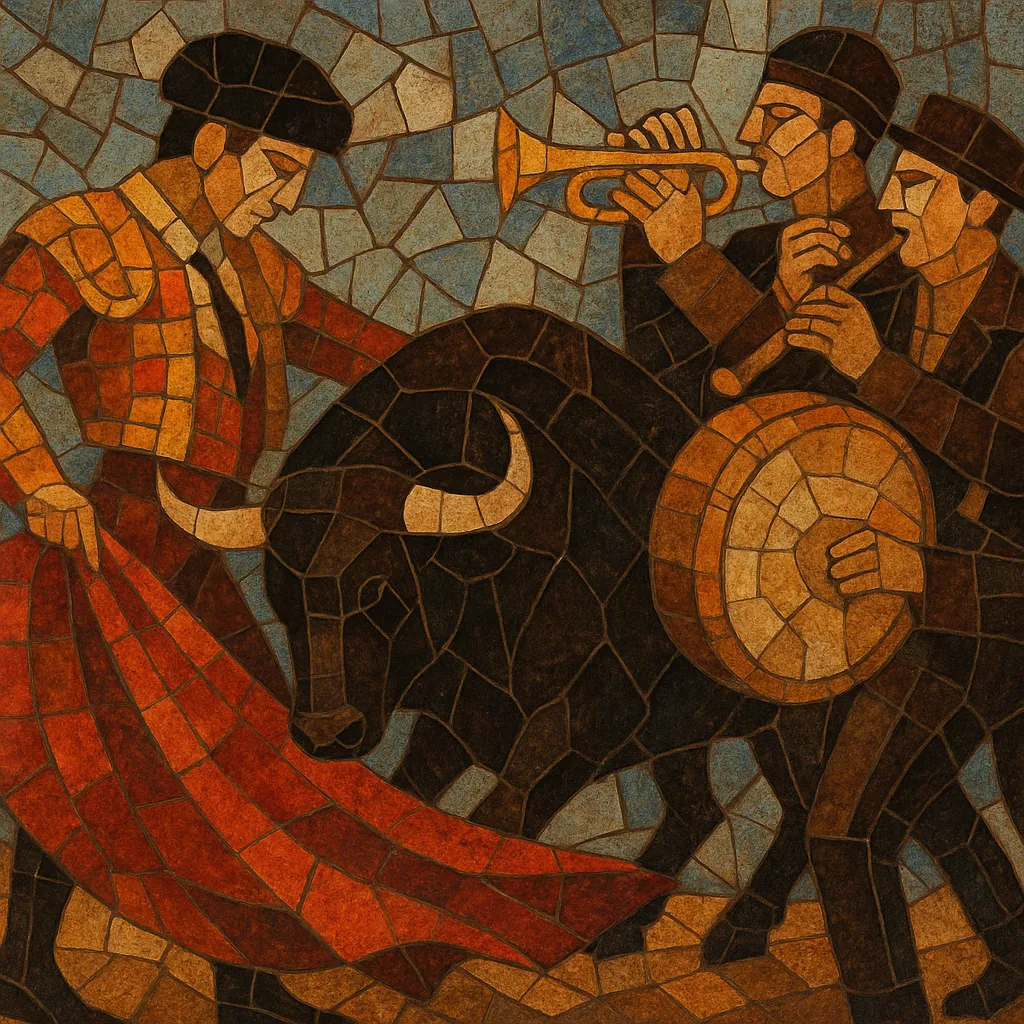Pasodoble is a Spanish duple‑meter march and dance whose name literally means “double step,” reflecting the two steps per measure that drive its striding character. It is traditionally written in 2/4, with a strong, insistent downbeat, brisk tempo, and brilliant band orchestration that spotlights brass, woodwinds, and snare drum rolls.
Closely associated with bullfighting pageantry and popular theater (zarzuela), the genre balances military‑style precision with dramatic flair. Melodies often carry a proud, declamatory contour, while harmonies favor bright major keys or minor tonalities colored by Phrygian inflections and the Andalusian cadence (iv–III–II–I). Formally, many pasodobles follow a march‑like layout—introduction, main theme(s), a contrasting trio (often modulating to the subdominant), and a rousing coda.
Beyond the bullring, pasodoble became a festive staple in Iberian town bands and later a standardized Latin dance in international ballroom, where choreography evokes the interplay between matador and cape.
Pasodoble took shape in Spain during the 1800s as a fast, duple‑meter march used for military and ceremonial purposes. Its emphatic two‑in‑a‑bar pulse, brilliant instrumentation, and clear phrase structure aligned it with European march traditions while giving it a distinctly Iberian accent.
By the late 19th and early 20th centuries, pasodoble became entrenched as the quintessential bullring music—announcing processions, highlights, and dramatic cues. At the same time, Spanish zarzuela composers embedded pasodobles within theatrical works, helping the style gain wider popular appeal beyond the corrida.
Between the 1900s and 1930s, composers produced many of the genre’s enduring pieces—concert and bullfighting pasodobles that town bands could perform at fiestas and civic events. The period yielded iconic melodies that cemented the style’s bold, celebratory identity.
Spanish migration and cultural exchange spread the pasodoble throughout Latin America, where it entered the repertoires of banda, mariachi, and other regional ensembles. In the mid‑20th century it was codified as a competitive Latin dance in international ballroom, standardizing tempo, phrasing, and a theatrical narrative arc that mirrors a bullfight.
Pasodoble remains a staple of Spanish band culture (especially in Valencia and Andalusia), a fixture at festivals, and a dramatic highlight in dancesport. Contemporary performances range from historically styled bullring marches to concert arrangements and ballroom orchestrations.


